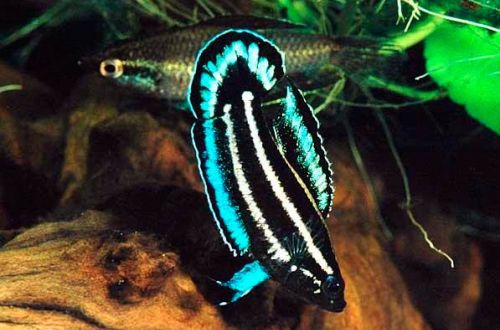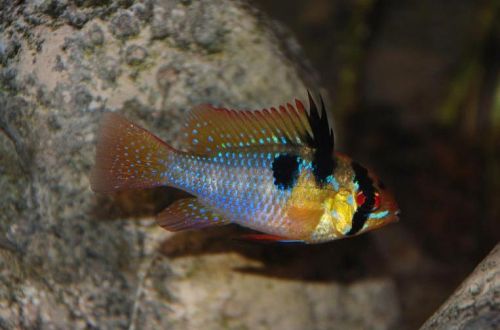
White-whiskered catfish
White-whiskered catfish, scientific name Bagrichthys majusculus, belongs to the family Bagridae (Killer whales). An amateur fish, which hides in a shelter for a significant part of the time and is not very friendly to relatives and other bottom dwellers. Despite this, it is quite unpretentious and easy to maintain, it can be recommended to beginner aquarists.

Contents
Habitat
It comes from Southeast Asia from the Mekong and Chao Phray river basins in Thailand and Laos, presumably found in Cambodia. Prefers regions of rivers with a slow flow, silty substrates. During the rainy season, it swims to the flooded coastal areas of the tropical forest.
Brief information:
- The volume of the aquarium – from 250 liters.
- Temperature – 24-28°C
- Value pH — 5.5–7.0
- Water hardness – 1–21 dGH
- Substrate type – any
- Lighting – subdued
- Brackish water – no
- Water movement – little or no
- The size of the fish is about 17 cm.
- Food – any sinking food
- Temperament – conditionally peaceful
- Keeping in a group of one male and several females
Description
Adult individuals reach a length of about 17 cm. The catfish has an elongated black body with a forked dorsal fin, the first part of which is high and raised, the second is low and stretches to the very tail. The tail fin is translucent. A characteristic feature is a snow-white mustache. The differences between male and female are insignificant.
Food
An omnivorous species, it will accept most of the foods popular in the aquarium hobby, for example, dry sinking flakes, pellets, live or frozen bloodworms, brine shrimp, daphnia, etc.
Maintenance and care, arrangement of the aquarium
The optimal tank sizes for 3-4 individuals start at 250 liters. The white-whiskered catfish is nocturnal, so the design should provide for several reliable shelters where it could hide in the daytime. These can be grottoes and gorges formed by snags and stones, or ordinary ceramic pots turned over on their side. Plants are not mandatory and are selected at the discretion of the aquarist or based on the needs of other inhabitants of the aquarium.
Successful long-term management depends on the provision of stable water conditions within an acceptable range of hydrochemical values and temperatures. The filtration system is largely responsible for the quality of the water, but mandatory maintenance procedures cannot be neglected, such as weekly replacement of part of the water with fresh water, removal of organic waste, etc.
Behavior and Compatibility
They belong to the territorial species. In particular, males will not tolerate a nearby rival, as well as other bottom fish. Females are somewhat more tolerant in this regard. It is advisable to select a heterosexual group according to the type of harem, i.e., consisting of one male for 3–4 females. However, this is difficult to do, since sexual dimorphism is poorly expressed. Compatible fish are any fish of comparable size that live in the water column or near the surface.
Breeding / breeding
At the time of writing, no cases of white-whiskered catfish breeding in home aquariums have been recorded. In nature, spawning is seasonal and is associated with the alternation of dry and wet seasons. During heavy rains, the coastline is flooded and part of the tropical forest is flooded, it is in these areas that fish rush for breeding. It is very difficult to recreate such conditions in an artificial environment.
Fish diseases
Being in favorable conditions is rarely accompanied by a deterioration in the health of fish. The occurrence of a particular disease will indicate problems in the content: dirty water, poor quality food, injuries, etc. As a rule, eliminating the cause leads to recovery, however, sometimes you will have to take medication. Read more about symptoms and treatments in the Aquarium Fish Diseases section.





